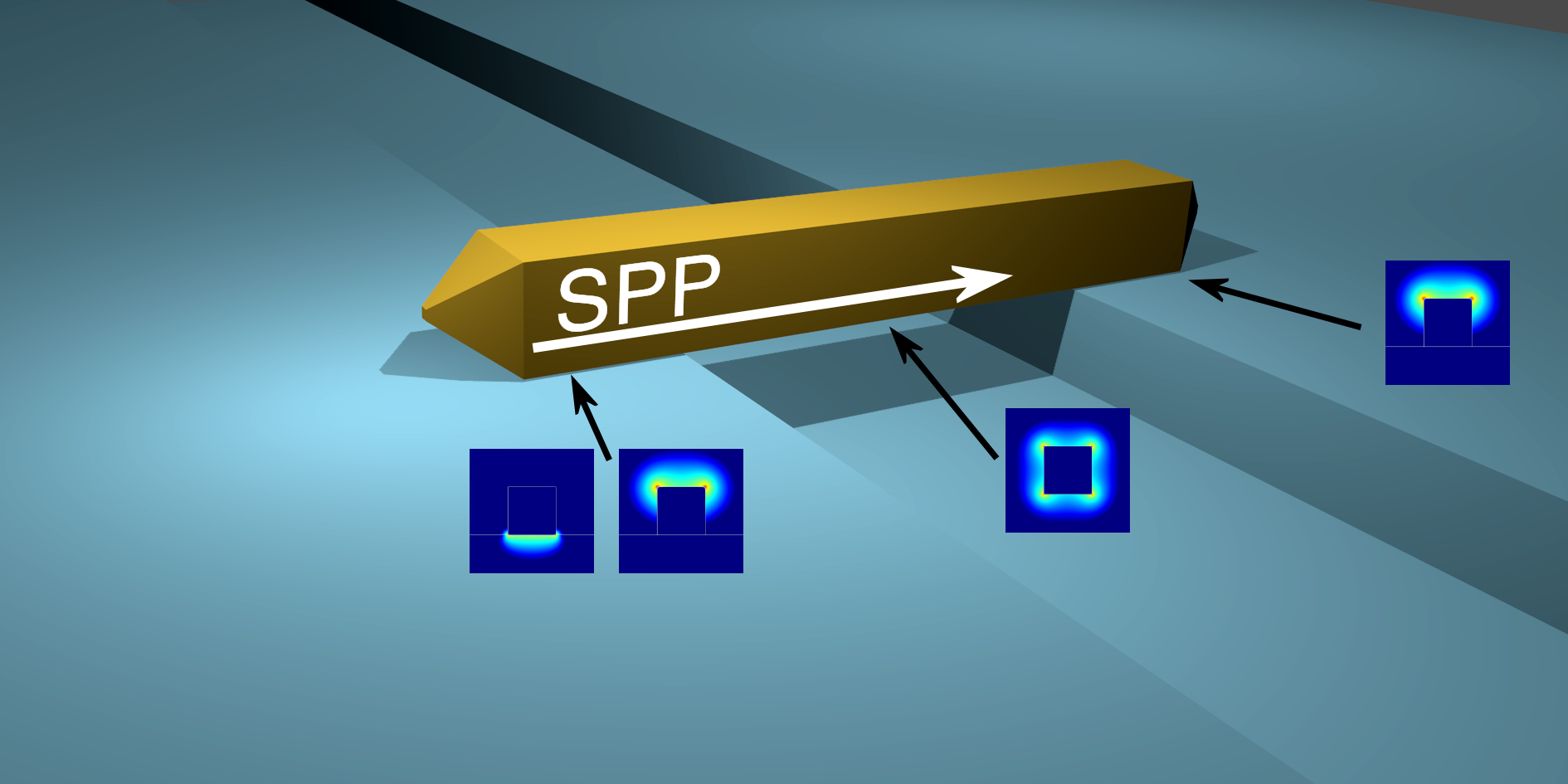Effect of substrate discontinuities on the propagating surface plasmon polariton modes in gold nanobars.
The surface plasmon polariton (SPP) modes of gold nanobars (nanowires with rectangular dimensions) have been investigated by scanning pump–probe microscopy. In these experiments the nanobars were suspended over trenches cut in glass coverslips, and propagating SPP modes were launched in the supported portion of the nanobar by focusing a near-IR pump laser beam at the end of the nanobar. Transient absorption images were then collected by scanning the probe laser over the nanobar using a galvomirror system. The images show that the trench has a large effect on the SPP modes, specifically, for approximately half the nanowires the propagation length is significantly reduced after the trench. Finite element calculations were performed to understand this effect. The calculations show that the pump laser excites bound and leaky modes (modes that have their fields localized at the nanobar/glass or nanobar/air interfaces, respectively) in the supported portions of the nanobars. These modes propagate along the nanobar. When they meet the trench their field distributions are altered. The modes that derive from the bound mode are strongly damped over the trench. Thus, the bound mode is not reconstituted on the opposite side of the trench, and only the leaky mode contributes to the signal. Because the bound and leaky modes can have different propagation lengths, the propagation lengths measured in our experiments can change from one side of the trench to the other. The results show how the substrate can be engineered to control the SPP modes in metal nanostructures.


Leave a Reply